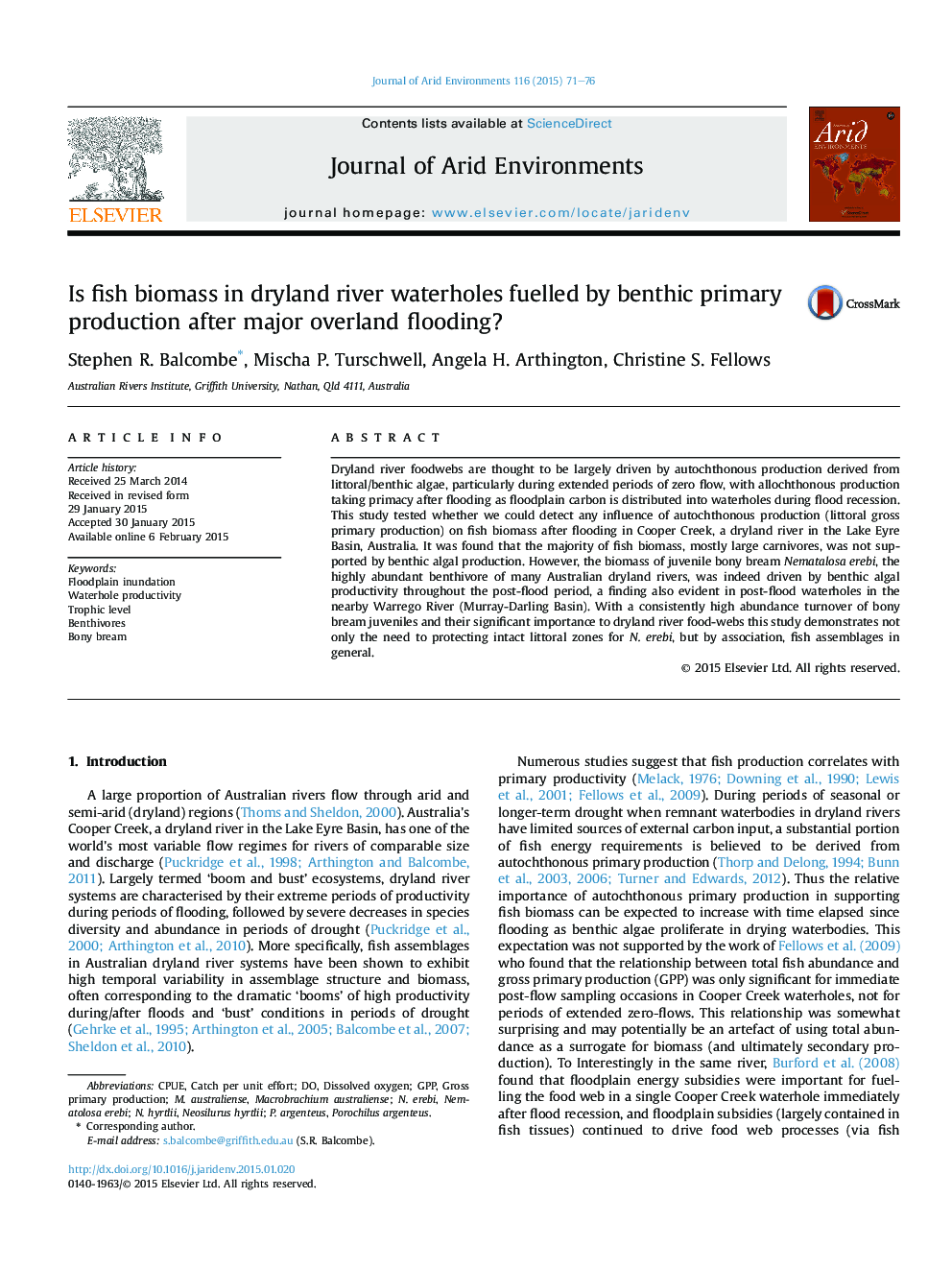| کد مقاله | کد نشریه | سال انتشار | مقاله انگلیسی | نسخه تمام متن |
|---|---|---|---|---|
| 4392916 | 1618243 | 2015 | 6 صفحه PDF | دانلود رایگان |
• Littoral zone gross primary production (GPP) and fish biomass post-flood.
• Higher tropic level fish biomass not sustained by GPP.
• Juvenile benthivorous fish (bony bream) strongly associated with GPP.
• Bony bream are a significant component of dryland river foodwebs.
• Results highlight the need to protect dryland river littoral zones.
Dryland river foodwebs are thought to be largely driven by autochthonous production derived from littoral/benthic algae, particularly during extended periods of zero flow, with allochthonous production taking primacy after flooding as floodplain carbon is distributed into waterholes during flood recession. This study tested whether we could detect any influence of autochthonous production (littoral gross primary production) on fish biomass after flooding in Cooper Creek, a dryland river in the Lake Eyre Basin, Australia. It was found that the majority of fish biomass, mostly large carnivores, was not supported by benthic algal production. However, the biomass of juvenile bony bream Nematalosa erebi, the highly abundant benthivore of many Australian dryland rivers, was indeed driven by benthic algal productivity throughout the post-flood period, a finding also evident in post-flood waterholes in the nearby Warrego River (Murray-Darling Basin). With a consistently high abundance turnover of bony bream juveniles and their significant importance to dryland river food-webs this study demonstrates not only the need to protecting intact littoral zones for N. erebi, but by association, fish assemblages in general.
Journal: Journal of Arid Environments - Volume 116, May 2015, Pages 71–76
